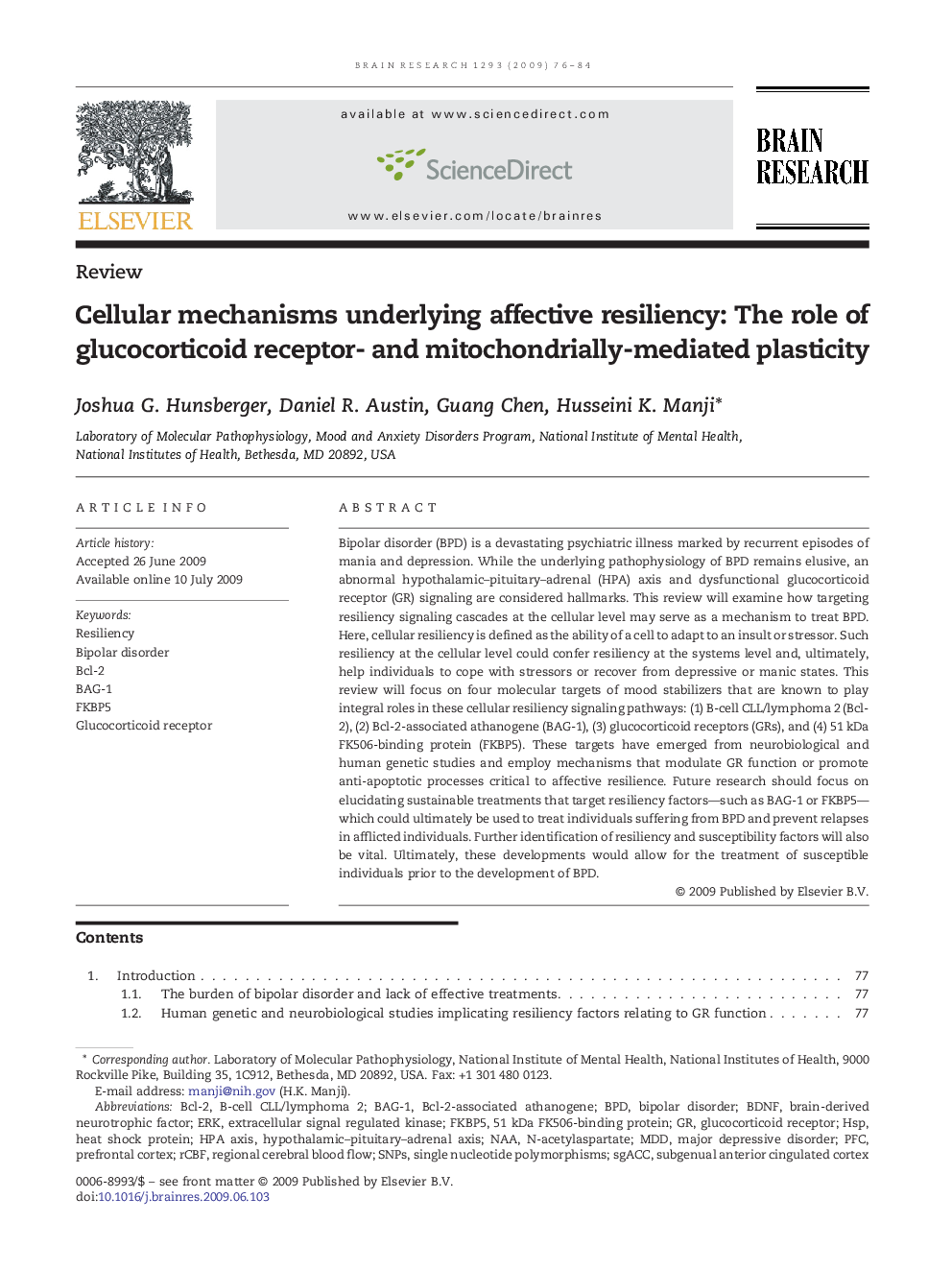| کد مقاله | کد نشریه | سال انتشار | مقاله انگلیسی | نسخه تمام متن |
|---|---|---|---|---|
| 4327843 | 1614146 | 2009 | 9 صفحه PDF | دانلود رایگان |

Bipolar disorder (BPD) is a devastating psychiatric illness marked by recurrent episodes of mania and depression. While the underlying pathophysiology of BPD remains elusive, an abnormal hypothalamic–pituitary–adrenal (HPA) axis and dysfunctional glucocorticoid receptor (GR) signaling are considered hallmarks. This review will examine how targeting resiliency signaling cascades at the cellular level may serve as a mechanism to treat BPD. Here, cellular resiliency is defined as the ability of a cell to adapt to an insult or stressor. Such resiliency at the cellular level could confer resiliency at the systems level and, ultimately, help individuals to cope with stressors or recover from depressive or manic states. This review will focus on four molecular targets of mood stabilizers that are known to play integral roles in these cellular resiliency signaling pathways: (1) B-cell CLL/lymphoma 2 (Bcl-2), (2) Bcl-2-associated athanogene (BAG-1), (3) glucocorticoid receptors (GRs), and (4) 51 kDa FK506-binding protein (FKBP5). These targets have emerged from neurobiological and human genetic studies and employ mechanisms that modulate GR function or promote anti-apoptotic processes critical to affective resilience. Future research should focus on elucidating sustainable treatments that target resiliency factors—such as BAG-1 or FKBP5—which could ultimately be used to treat individuals suffering from BPD and prevent relapses in afflicted individuals. Further identification of resiliency and susceptibility factors will also be vital. Ultimately, these developments would allow for the treatment of susceptible individuals prior to the development of BPD.
Journal: Brain Research - Volume 1293, 1 October 2009, Pages 76–84